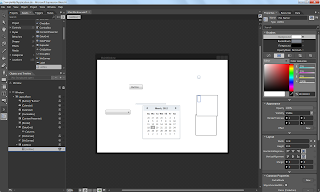
- #EXPRESSION BLEND DOWNLOAD FOR VISUAL STUDIO 2010 INSTALL#
- #EXPRESSION BLEND DOWNLOAD FOR VISUAL STUDIO 2010 CODE#
* Learn more about using OpenMP and Intel® TBB for parallel operation, please refer document of Using oneMKL with Threaded Applications For using Intel MPI with oneMKL, please view Using oneMKL MPI wrapper with the oneMKL cluster functions. Cluster: To link with oneMKL cluster components (sequential) that use Intel® MPI.

Sequential: To link with sequential version of oneMKL Parallel: To link with a certain oneMKL threading layer depending on the threading option of OpenMP or Intel® TBB The detailed information of each option is shown below: Step 2: Change the Use MKL property setting by selecting Parallel, Sequential, or Cluster as appropriate, and apply this change to your project. Step 1: Right click solution, select Properties » Configuration properties » Intel Performance Libraries » Use oneMKL Figure 1 shows the screenshot of this step.

Use oneMKL in Microsoft* Visual Studio 2017/2015/2012/2010 - Automatically In this section, using oneMKL with MSVS 2017 will be discussed as an example, for Microsoft* Visual Studio 2010 and MSVS 2012, please follow the same guide. User could use oneMKL wit your projects in MSVS Integrated Development Environment (IDE) by one step.
#EXPRESSION BLEND DOWNLOAD FOR VISUAL STUDIO 2010 INSTALL#
While user fully install the Intel® Parallel Studio or select oneMKL manually to install, the math kernel library will be integrated into MSVS automatically. OneMath Kernel Library could be installed as sub-component of Intel® oneAPI Base & HPC Toolkit integrated into the Microsoft* Visual Studio* (MSVS). But if you don’t understand something in this syntax, let me know and I’ll include more information in the documentation.ĭocumentation for this feature is now availabe on MSDN: Debugging Expression Trees.The following provides hints for linking your program with oneMKL from the Microsoft* Visual Studio Environment: There are some other nuances that I think are evident and don’t need additional explanation. For example, the checked addition operator is displayed as #+. Checked operators are displayed with the # symbol preceding the operator.If a parameter, label, or lambda expression does not have a name, the name is generated automatically (for example, #Label1, $var1, etc.).(For example, for decimal the value is 1M, for double 1D, etc.) For other numeric types that have standard suffixes, the suffix is added to the value. Integer, string, and null constants are displayed “as is” (for example, $result = 1).Parameters are displayed with a $ symbol at the beginning (for example, $result and $value.).There are some simple rules used in this metalanguage: (No, we couldn’t use C# here, because expression trees serve other languages as well.) Now click Text Visualizer and you get this.Īs you can see, the content of the expression tree is represented in some kind of metalanguage. Click the magnifying glass icon and you will see the list of available visualizers. But it’s used to hook up the expression trees visualizer. This property is private and is exposed only in the debugger, so you can’t use it in your code. Rest the mouse pointer over the lambda variable and you will see that it has the DebugView property.
#EXPRESSION BLEND DOWNLOAD FOR VISUAL STUDIO 2010 CODE#
This gives you a good understanding of the tree structure, but it might be hard to understand the actual content of the tree.īut there is a better solution: expression trees now have their own visualizer that helps you to explore their structure and content.Ĭopy the above code example into Visual Studio 2010, set a breakpoint at the last line, and press F5. However, since this is a tree, you need to click through numerous nodes. Basically, it tells you only that the lambda has the result parameter.Īnother option is to explore the tree structure in the Watch window. Now, what if you want to see the content of this tree in debug mode? You can try lambda.ToString() but it’s not very informative.

LabelTarget label = Expression.Label( typeof( int)) īlockExpression block = Expression.Block(Įxpression.Assign(result, Expression.Constant( 1)), ParameterExpression value =Įxpression.Parameter( typeof( int), "value") Įxpression.Parameter( typeof( int), "result") It creates an expression tree for calculating the factorial of a number. First of all, let’s take a look at the example from one of my previous posts.


 0 kommentar(er)
0 kommentar(er)
